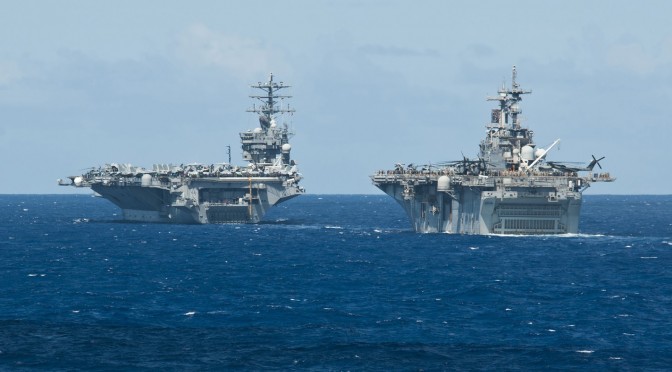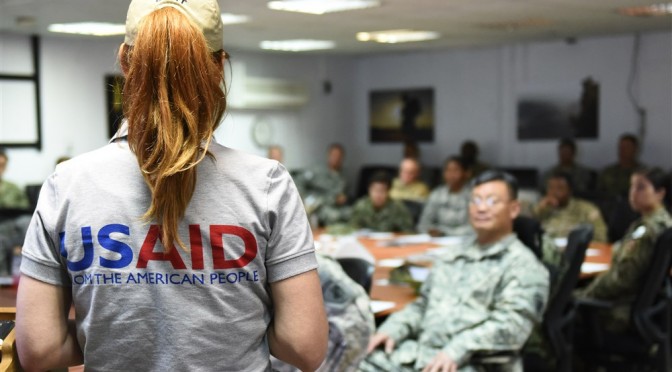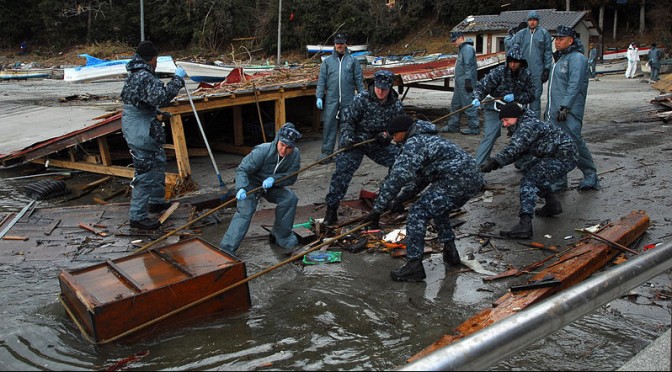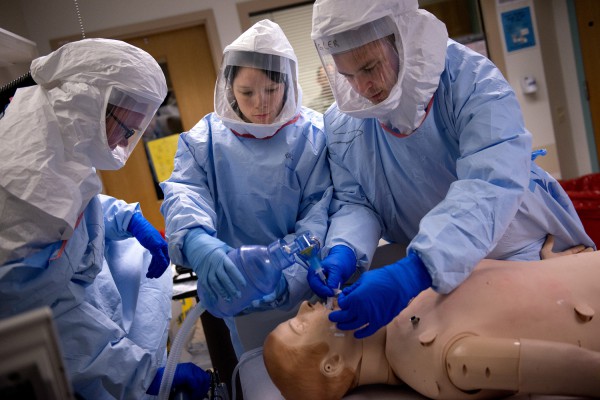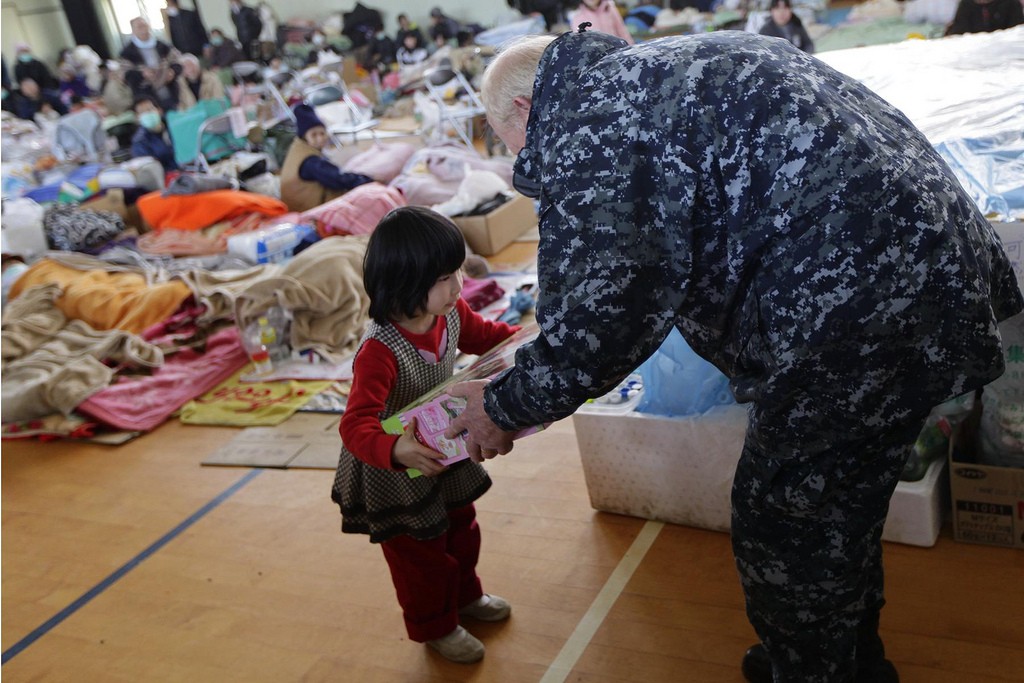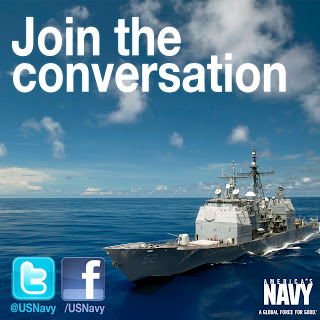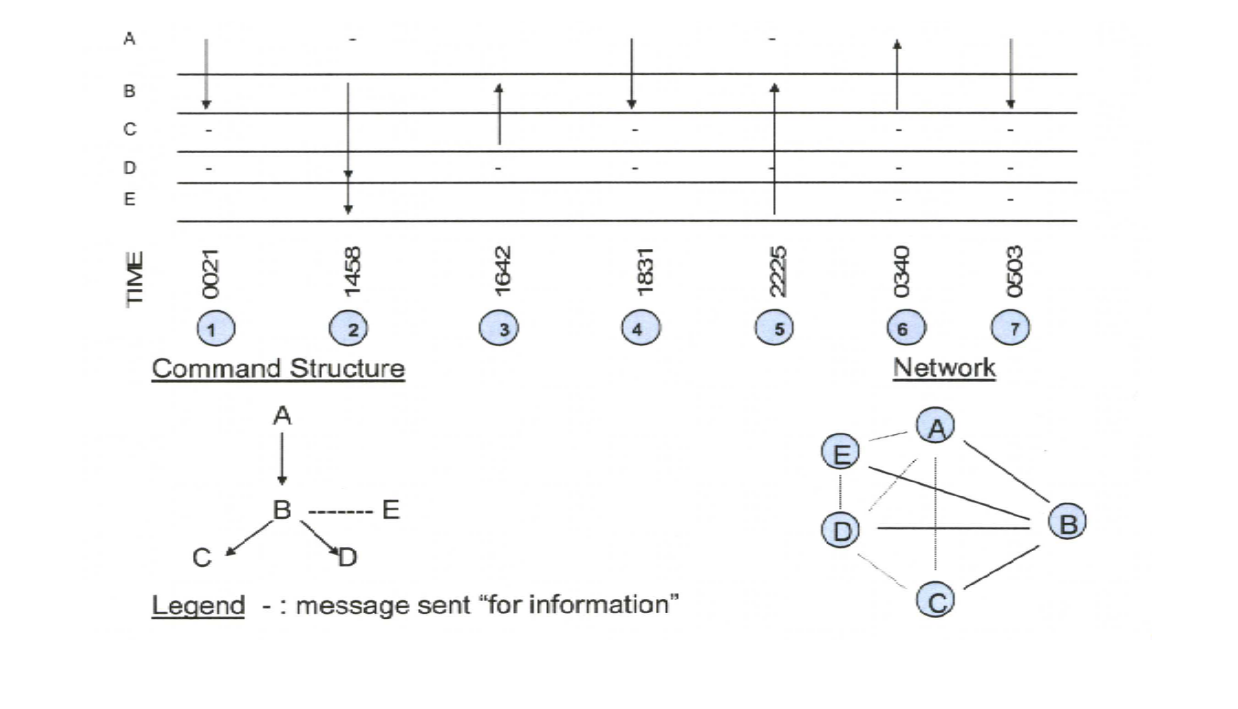By LCDR Josh Heivly
Although fundamentally a secondary mission for the Department of Defense, Humanitarian Assistance and Disaster Relief (HA/DR) missions are a recurring feature of modern naval operations and must be considered in the design of the future fleet. Recent arguments made for and against the aircraft carrier have referenced this capability, but have confused the issue. Aircraft carriers are optimized for aviation and strike operations, with little inherent HA/DR capability. The Navy’s amphibious ships offer the most capability and responsiveness for HA/DR missions, equipped as they are with landing craft, helicopters, and Marines, all specifically trained to conduct this type of mission, among many others. HA/DR operations are an ad hoc affair for CVNs – they offer some utility as a second-echelon responder, once appropriately loaded out. This does not diminish their value, as their ability to channel US political will is unmatched – they are an iconic symbol of US resolve and commitment, and as such are extremely useful in a political context.
For the Navy, reactive HA/DR has been a recurring mission for the past 100 years or longer, as it leverages the Navy’s strong suits: “…mobility, adaptability, , scalability, and interoperability – while bringing into play our naval core functions of sea control, power projection and maritime security.”[1] There are numerous examples throughout the 20th century in which naval forces engaged in HA/DR activities at home and abroad. Recent high visibility operations include deployments in response to:
- Hurricane Katrina in 2004;
- The 2004 Indian Ocean earthquake and tsunami;[2]
- The Haitian earthquake in 2010;[3]
- The multifaceted 2011 disaster in Japan; [4]
- Typhoon Haiyan in the Philippines in 2013.[5]
In each case, the Navy dispatched ships, aircraft, and personnel to render immediate assistance and deliver aid. It should be noted that Humanitarian Assistance, as it is focused on rendering assistance to populations external to the United States, is primarily a Department of State (DoS) function via USAID[6], while Disaster Response is the purview of various Federal and State agencies charged with executing this function within our borders. As such, HA/DR is not a primary mission for the Department of Defense (DoD), despite the frequency with which our military engages in these activities. This should be kept in mind in regards to future HA/DR missions – the Navy can only offer support to the cognizant agencies as directed and within the scope of their operations. In spite of this, the Navy’s mobility and forward deployed global presence virtually guarantees it a role in the initial response when disasters occur.[7]
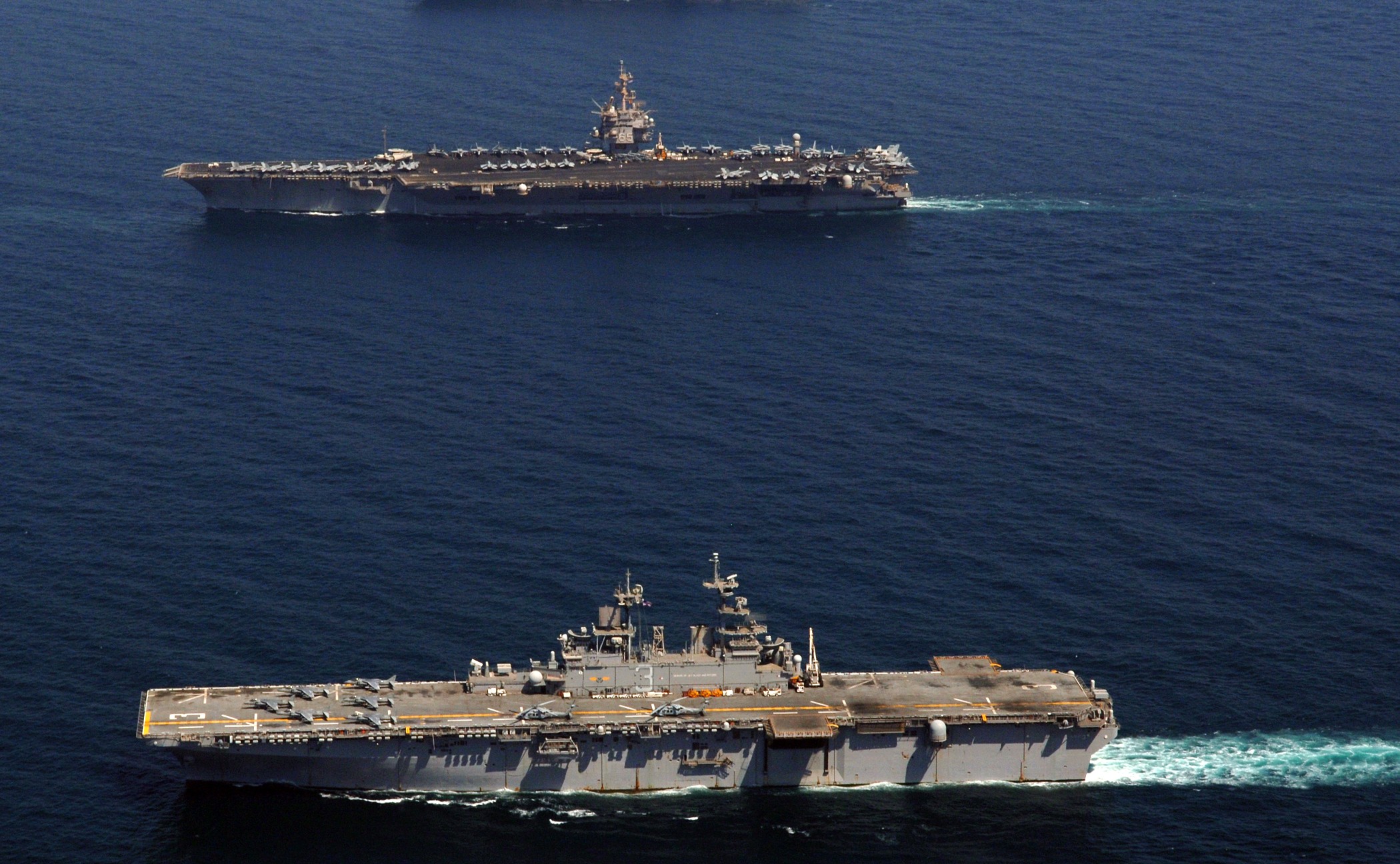
In terms of force management and the planning of the future Fleet, HA/DR has crept into the most recent exchanges of the ongoing “Carrier Debate.” Because of the regularity of US involvement in peacetime mission like HA/DR and Noncombatant Evacuation Operations (NEO), prominent naval analyst and writer Norman Polmar has proposed that the Navy would be better served by building big deck amphibious ships like LHDs, which can be acquired in larger numbers due to their lower price tag: $3 billion each, as opposed to the projected $12 billion outlay for the first installment of the Ford-class CVN.[8] One response to this proposal acknowledges the value of big deck amphibs but argues that aircraft carriers are still valuable for Military Operations Other Than War (MOOTW) due to their ability to embark SEALs and USMC Fleet Anti-terrorist Security Teams (FASTs), as well as the capabilities integral to its air wing, to include airborne early warning (AEW), electronic warfare (EW), and the robust MH-60S helo squadron.[9]
Neither of these arguments are compelling. LHDs are simply not able to support high intensity, high optempo aviation operations,[10] and putting four of them together in the hopes of generating the same amount of combat power ignores the organic strength of the Carrier Air Wing (CVW) and the inherent advantages of a Catapult Assisted Take-Off Barrier Arrested Recovery (CATOBAR) flight deck system. On the other side of the equation, aircraft carriers are not really intended to project ground combat power ashore, and although they have in the past embarked formations of Marines or SOF in order to act as a “lily pad”, this is hardly within the normal scope of their employment and is not part of their regular mission set. The CVN-CVW team may improvise its way through HA/DR or NEO events, but it isn’t designed, equipped, or trained to handle them.
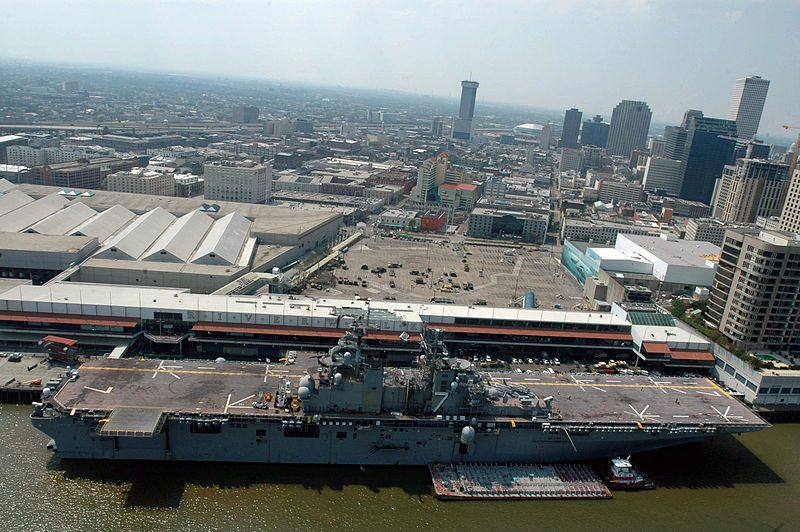
These platforms bring different capabilities to meet the HA/DR challenge, and should not be misunderstood to be in competition within the same mission “space.” Aircraft carriers are optimized solely for aviation operations, to include air superiority, strike, AEW, EW, command and control, and all of the related sub-functions necessary to support around-the-clock sortie generation for weeks at a time. In this function they excel. But we should not exaggerate the CVN’s ability to directly provide relief in the aftermath of a disaster. Despite the 2012 infographic put out by Huntington-Ingalls to highlight the CVN’s HA/DR capabilities,[11] the aircraft carrier’s medical, dental, utility, supply, and service capabilities are all designed to provide support capacity for the ship and the embarked air wing, and are largely expended to that end. An aircraft carrier arriving on station has a very limited excess capacity to apply to the care and sustainment of large numbers of disaster victims. There are no stores carried for possible HA/DR missions, and the carrier-air wing team does not train for this eventuality as part of its workup cycle.
Big deck amphibs, on the other hand, are equipped and trained for these types of missions. While embarking roughly the same number of helicopters as a CVN, an LHD operates landing craft from its well deck (which are critically useful for HA/DR)[12], runs a large and highly capable medical complex, and embarks almost 1700 Marines.[13] It carries supplies tailored to support NEO events (which are easily used for HA/DR as well) and trains for this mission as part of its workup cycle. LHDs have a shallower draft than CVNs, allowing them to move closer inshore; this demonstrated its value when USS IWO JIMA drove up the river and moored pierside in New Orleans to assist with relief efforts there after Hurricane Katrina.[14] However, the big deck amphibs are not set up to conduct sustained aviation operations; they are also slower than carriers, limiting their ability to quickly arrive on-station and provide support.
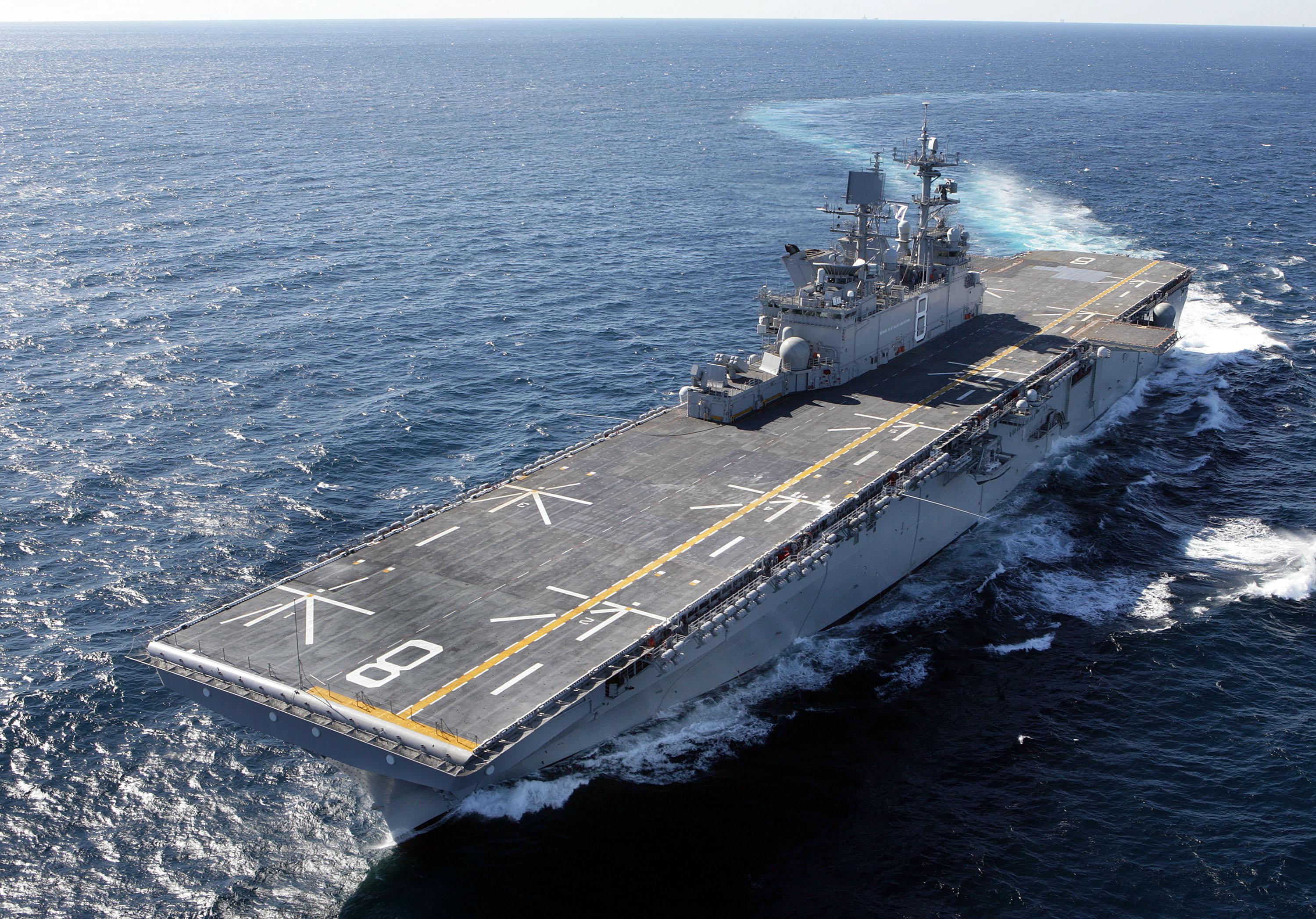
CVNs and LHDs fulfill very different mission requirements. Both ship types are designed first and foremost to project power, the former through its embarked Carrier Air Wing (CVW) and the latter through its embarked Marine Corps Air Ground Task Force (MAGTF). Neither can perform the other’s primary function very well. The aircraft carrier is “…not well-suited to act as a base of operations for nontraditional capabilities for extended periods of time,”[15] having no ability to project troops ashore unless specially configured and loaded out for this purpose, while equating an LHD to a “fraction” of an aircraft carrier is an extremely inefficient proposal, as large parts of the big deck amphib are devoted to the Ground Combat Element of the MAGTF. Arguing for additional or fewer platforms of either type on the basis of their ability to perform each other’s missions is in actuality a false choice that would liken dollar values or numbers of embarked aircraft to equivalent capabilities. This just isn’t the case, and measuring these platforms against the design of the other is not a useful exercise for force planning purposes.
In actuality, operations like HA/DR lie squarely in the realm of the amphibious force, not because aircraft carriers have nothing to add, but because their capability set has less to offer in this environment. Deployed carriers offer limited utility for the HA/DR mission due to the large numbers of fixed-wing aircraft onboard;[16] helicopters are the aviation workhorse of OOTW missions, flying around the clock, but comprise only a fraction of the current wing configuration. A post-deployment, “surge-ready” aircraft carrier offers the best opportunity for this class of ship to contribute to HA/DR contingencies. If pier-side at homeport at the outset of a crisis, it can quickly load up with humanitarian supplies, embark specialists, take on squadrons of helicopters, and then make a high speed run to the operating area. Once on-station the carrier can deliver its cargo and provide useful aviation capabilities to augment and expand a response package initially filled out by an ARG.
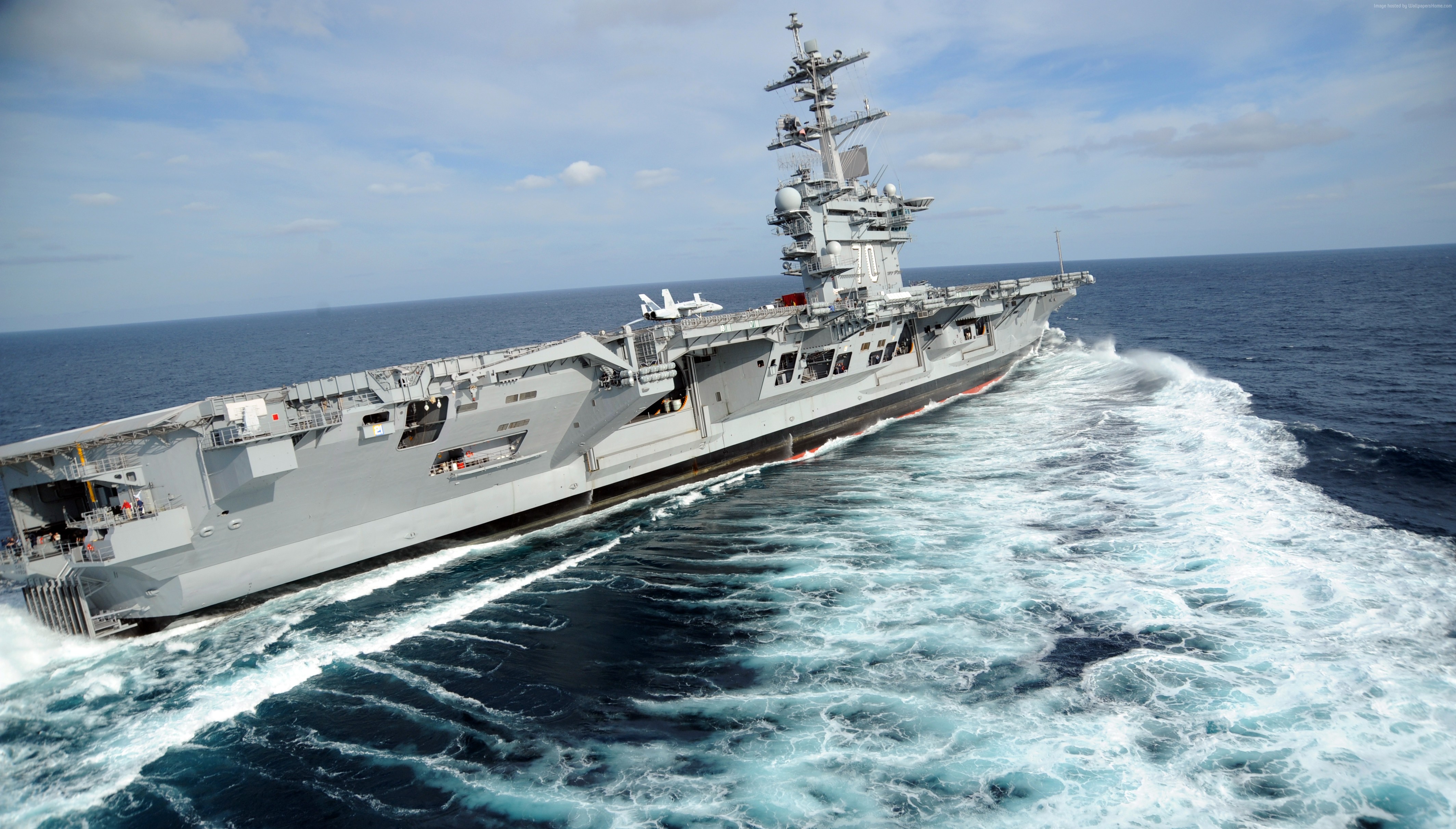
Practicalities aside, the CVN’s ability to deliver a strong political statement is unmatched. Beyond launching and recovering combat aircraft, they are a distinct symbol of American military capability, national will, and resolve – and it is in this role that they may offer the most to the HA/DR mission. The flat-top is an iconic image, recognized world-wide as an expression of American military might, delivering an unmistakable message in the form of 100,000 tons of American steel.[17] Aircraft carriers stand on their own merits doing exactly what they are designed to do – project power. In the case of HA/DR, the aircraft carrier is a vehicle for soft power, supporting the mission while highlighting U.S. leadership in the delivery of relief to those most in need, wherever and whenever disaster strikes.
LCDR Josh Heivly is an active duty Navy Supply Corps Officer. The views voiced here are his alone and in no way represent the views of the US Navy or the Department of Defense.
[1] Smith, RADM Michael. “Humanitarian Assistance, Disaster Response Missions Strengthen Navy”. 12 Jun 2013. Accessed 27 Mar 2015: http://navylive.dodlive.mil/2013/06/12/humanitarian-assistance-disaster-response-missions-strengthen-navy/
[2] Webster, Graham. “The Military Foundations of U.S. Disaster Assistance in Japan”. 7 Apr 2011. Accessed 26 Mar 2016 at: http://www.nbr.org/research/activity.aspx?id=127
[3] Lubold, Gordon. “US send aircraft carrier to help with Haiti earthquake damage”. 13 Jan 2010. Accessed 11 Mar 2016: http://www.csmonitor.com/USA/Military/2010/0113/Us-sends-aircraft-carrier-to-help-with-Haiti-earthquake-damage
[4] Smith.
[5] Macfie, Nick. “Dramatic U.S. humanitarian effort in Philippines aids Asia’pivot’”. 18 Nov 2013. Accessed 11 Mar 2016 at: http://www.reuters.com/article/us-philippines-typhoon-pivot-idUSBRE9AH12L20131118
[6] Cecchine, Gary, et al. The U.S. Military Response to the 2010 Haiti Earthquake: Considerations for Army Leaders. Santa Monica: Rand. 2013. 10-11.
[7] “Humanitarian Work and Disaster Relief.” Accessed 12 Mar 2016 at: http://www.navy.com/about/mission/humanitarian.html#who
[8] Freedberg, Sydney. “Polmar’s Navy: Trade LCS & Carriers for Frigates and Amphibs”. 18 Dec 2015. Accessed 14 Mar 2016 at: http://breakingdefense.com/2015/12/polmars-navy-trade-lcs-carriers-for-frigates-amphibs/
[9] Beng, Ben Ho Wan. “The Case for Carriers: Rebutting Norman Polmar”. 28 Dec 2015. Accessed at: http://breakingdefense.com/2015/12/the-case-for-carriers-rebutting-norman-polmar/
[10] Gordon, John, et al. Leveraging America’s Aircraft Carrier Capabilities: Exploring New Combat and Noncombat Roles and Missions for the US Carrier Fleet. Santa Monica: Rand. 2006. 19.
[11] Hickey, Walter. “INFOGRAPHIC: Aircraft Carriers Do A Whole Lot More Than you Ever Thought.” 15 Jun 2012. Accessed 11 Mar 2016 at: http://www.businessinsider.com/infographic-air-craft-carriers-do-a-whole-lot-more-than-shoot-2012-6
[12] Apte, Aruna. “An Analysis of United States Navy Disaster Relief Operations.” Apr 2012. 10. Accessed 27 Mar 2016 at: https://www.pomsmeetings.org/confProceedings/025/FullPapers/FullPaper.htm
[13] Parker, Elton C. “Aircraft Carriers and What Comes Next.” 10 Dec 2013. Accessed 10 Mar 2016 at: http://warontherocks.com/2013/12/aircraft-carriers-90000-tons-of-soft-and-hard-power-projection-but-what-comes-next/
[14] Jean, Grace V. “Naval Forces See Greater Demand for Large Amphibious Ships.” Oct 2008. Accessed 13 Mar 2016 at: http://www.nationaldefensemagazine.org/archive/2008/October/Pages/Naval%20Forces%20See%20Greater%20Demand%20for%20Large%20Amphibious%20Ships.aspx
[15] Gordon. xix.
[16] Apte. 23.
[17] Parker.
Featured Image: The aircraft carrier USS Nimitz (CVN 68) and the amphibious assault ship USS Essex (LHD 2) are underway in close formation during the Rim of the Pacific (RIMPAC) 2012 exercise. (U.S. Navy photo by Mass Communication Specialist 3rd Class Raul Moreno Jr./Released)

